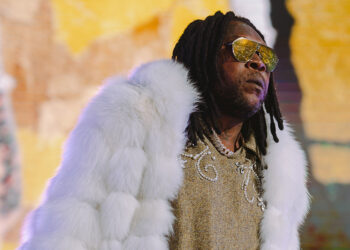In Trinidad & Tobago, you know it’s Christmas when you start hearing the voices of Scrunter, Baron and Kenny J while cleaning the forgotten corners of your house and making sorrel. Parang music celebrates more than just the birth of Christ or universal Christmas tradition; it is a celebration of local culture and all its richness.
The term “parang” is derived from the Spanish word parranda, which means a spree or party. It comes from the verb parrandear which is translated as “to go out partying”. In Spanish, it is mainly used in the expression “andar de parranda”, which can be translated as ‘to go paranging’ which is to move from house to house singing and liming with those in the neighborhood (similar to ‘caroling’). Groups of singers and musicians called parranderos go from house to house to serenade families and communities. Currently, this takes place only in specific areas in Trinidad – the most popular being Paramin. Every year Paramin hosts two parang events which people from outside the village also attend. Parang bands also perform in Christmas concerts and at malls around Christmas time.
There are two stories about the origins of Trinidad parang. The first is that it was brought by the Spaniards while they colonized Trinidad. It is said that the tradition continued after the British took control because of the interaction with Venezuela. The second theory claims that Venezuelans who came to Trinidad to work on the cocoa plantations in the 1800s brought the tradition. No matter its origins, it has become a vehicle for immortalizing Trinidadian history and traditions. Traditional parang music is sung in Spanish and accompanied by instruments which are representative of T&T’s diverse culture. Instruments such as the cuatro, box bass, mandolin and chac chacs (maracas) show the influence of the indigenous groups, Africa and Spain. Many parang bands now include the steel pan, the national instrument which was created locally. Most songs are religious in nature and speak about the birth of Jesus.
However, parang has been hybridized and two subgenres have been formed – parang soca and soca parang. (No Trinis, they are not the same). Parang soca has a parang rhythm as the base. The first major parang soca was aptly called “Parang Soca” (also known as “Maria”) by Crazy in 1978 and gave the sub-genre its name. It is mostly sung in English with some Spanish phrases. Soca parang is now the most popular form of parang music. It has a soca base and is mostly sung in English. While new songs are released each year, people still turn to the classics; I dare suggest that it’s because it has summed up Trinbagonian culture and thought in a way that continues to speak to us year after year.
Themes and lyrics range from unity, to romance, to food. Many songs speak about paranging. Ninja tells us about the time he “parang de wrong house” while Scrunter tells the story of Leroy’s mother going to parang without cleaning or cooking at home. Songs about local Christmas food and traditions such as ham, pastelles and painting are endless. Often, they are double entendres about Kenny J “wanting a brush” or “feelin’ to put something in yuh mouth”, bringing the lyrical mastery of calypso to parang.
Forget chestnuts roasting on an open fire and winter wonderlands. Christmas in Trinidad & Tobago will make you exclaim with Susan Macio, “Oh yes! Trini Christmas is de best!”.











